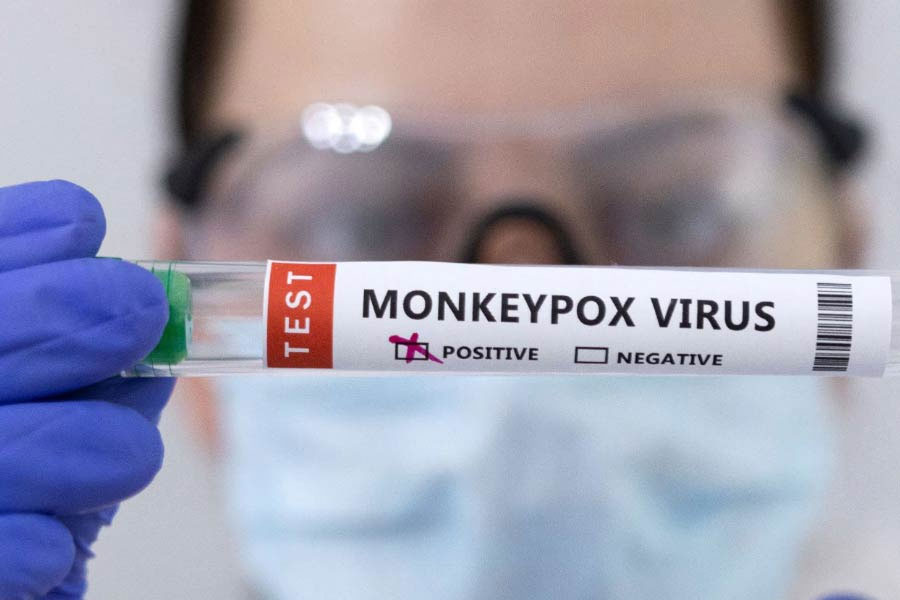
Published :
Updated :

Considering the upsurge of mpox in the Democratic Republic of Congo (DRC) and other African nations, the WHO Director-General (DG), Dr Tedros Adhanom Ghebreyesus on August 14 declared that it was a public health emergency of international concern (PHEIC). The reason for the concern is that the type of mpox named Clade 1 spreading in DRC since the beginning of this year till the end of July has infected more than 1400 people and claimed 450 plus lives. It may be recalled that the other variant of the mpox, Clade 2, that spread to some 100 countries including Asia and Europe in 2022 was a milder variety and not fatal. Symptoms of mpox infection have similarities with those of influenza which include high temperature, headache, muscle aches, backache, swollen glands, joint pain, shivering and severe weakness (exhaustion).
With the fever erupts rash on the patient's skin. The rash often shows up on the face and then it spreads to other parts of the body, especially on the palms of the hands and soles of the feet. The rash, which is itchy and painful, passes through different phases until it finally forms a scab. Ultimately, the scab falls off leaving scars on the infected areas. The symptoms clear up within two to three weeks. For people with immunodeficiency and children under 15, the infection can be fatal needing anti-mpox jabs. However, older people who are over 40 and inoculated against small pox are thought to be immune from mpox. On this score, it may be recalled that small pox has been phased out from the world four decades ago. So, the possibility is high that people, who are in their 40s and above, had their anti-small pox jabs, as the disease was endemic in this part of this world in those days.
Notably, mpox virus belongs to the family of small pox, but is far less virulent. The infection may take place through broken skins, close physical contact such as sex, touching objects used by infected person and talking with an infected person sitting close by. The way mpox spreads has a lot of similarity with coronavirus and so the health protocols to protect against mpox, too, have similarities. Mpox is a zoonotic disease meaning it can spread from animals to humans. Now it is being transmitted among humans. Originally, the disease was endemic in the tropical rain forests of the West and Central Africa. Recently, the highly infectious disease is learnt to have spread to central and East African countries including Burundi, Rwanda, Uganda and Kenya where the disease was not endemic. Now what concerns scientists is that the Clade 1 variant of the mpox, which, earlier, was confined to DRC over the decades, is now spreading to other parts of Africa and beyond. Reports have it that in this latest wave of mpox's spread, both the number of cases and fatalities from them have increased by 160 per cent and 19 per cent respectively compared to the records of 2023. Recently, outside Africa, the first case of Clade 1 was detected in Sweden in Europe. That was the first ever case detected in that country, said public health agency of Sweden. The person who brought the disease to that country stayed in an African country where that particular variant, Clade 1, had broken out. Interestingly, it happened hours after the WHO DG declared that the outbreak of mpox in parts of Africa was now a PHEIC. But the most concerning part of the story is the arrival of newer and severer form of Clade 1, called Clade 1b, among the people who were infected with Clade 1 variant last year. Clearly, the Clade 1 variant of the mpox is evolving, maybe through genetic mutation. However, experts are yet to fully understand the behaviour of this latest variant of mpox. Even so, it is clear that this deadlier version of mpox spreads faster causing more serious medical conditions in the infected persons.
But the mpox is no more the story of an infectious disease that is affecting people in a remote part of the world. From their experience of the Covid-19 pandemic, the public knows how fast such diseases can leap across the continents. Last Friday, Pakistan's health ministry announced the detection of an mpox-infected person in that country. Accordingly, a health alert has been declared there. But there is no such report yet in Bangladesh. Even so, it is commendable that Bangladesh's health ministry on Saturday last issued high alert against mpox. Also, the directorate general of health services (DGHS) has issued a guideline to avoid getting infected by the disease along with providing the public with contact numbers (16263 and 10655) to inform in case someone is found with symptoms of mpox. As part of the measures to protect against importing the disease from abroad, arrangements have been made at the Hazrat Shahjalal International Airport (HSIA) to screen temperatures of people arriving from foreign land.
While welcoming the government's prompt measures against the possible entry of the disease from outside the country, it is worth noting that the vaccines against mpox are in short supply globally. Worse yet, the funds to procure the vaccine, too, are also not readily available with the global agencies responsible for public health. The government will be required to make especial efforts to collect anti-mpox jabs from whatever sources possible, particularly for the immunocompromised section of the population including children. At the same time, research facilities for testing and analysing samples from any mpox-infected person should be made available for researchers to detect if the risky variants like Clade 1 or Clade 1b are entering the country.
sfalim.ds@gmail.com


 For all latest news, follow The Financial Express Google News channel.
For all latest news, follow The Financial Express Google News channel.